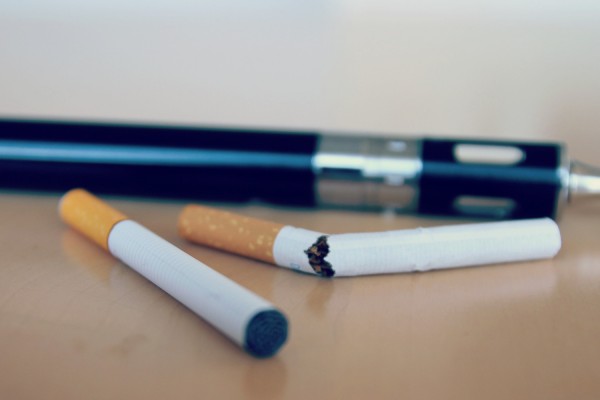Click to join the conversation with over 500,000 Pentecostal believers and scholars
Click to get our FREE MOBILE APP and stay connected
| PentecostalTheology.com



A peculiar form of healing prayer in England (and France) continued from the Middle Ages to the 1700s, the “King’s Touch” That is, a rite in which the king or queen laid hands on supplicants for healing.[1] Most often this rite was done for the healing of scrofula, a type of tuberculosis common in the era and which mostly afflicted the neck and skin and caused horrible fistulas and blisters. The bacteria that cause it commonly occurred in cow’ milk and was easily transmittable. Medical means of the era were helpless to stop it.
There is consistent eye-witness evidence that the laying on of hands by a monarch resulted in miraculous healings of scrofula and other diseases. This sounds strange to our democratically tuned sensibilities, but kings in England, France and other parts of Europe did in fact lay hands on and touch many and thousands who were healed.[2] (We will discuss the biblical reasons why this ministry was effective at the end of this section) The rite of the king’s touch was begun in England by the much beloved and saintly monarch, Edward the Confessor (1003-1066). It continued by English (and French) monarchs after him, most of whom were considerably less sanctified than Edward, but the efficacy of the rite seemed to not have diminished.[3]
The healing touch must be understood in the context of the anointing of monarchs with blessed oil during their coronation rite, starting in the Ninth Century for Frankish kings. This was taken with great seriousness, based on Old Testament models for the anointing of kings (1 Samuel 16: 12-13).
Then the Lord said, “Rise and anoint him; this is the one.” So Samuel took the horn of oil and anointed him in the presence of his brothers, and from that day on the Spirit of the Lord came powerfully upon David. Samuel then went to Ramah.
This scripture shows some sort of grace was given at the anointing of David. In fact, some theologians in the early Middle Ages had argued that the anointing of kings should be recognized as an official sacrament. This did not happen, but as a rite, the anointing of kings passed on from France and became established in England where it remains to this day. At the crowning of James I and Charles I, royal unction was understood as similar to the Old Testament anointing of kings and prophets. Over Charles I the Archbishop prayed: “Kindle, O Lord, his heart with love of thy grace, by that holy oil wherewith thou hast anointed him, as thou didst anoint Kings, Priest, and Prophets….”[4]
Henry VIII of reformation fame (and infamy) was anxious to establish his legitimacy as king due to the devastating civil war that played out to seat his father on the throne. Practicing the kings’ touch in public rituals was a means to authenticate his monarchy as blessed by God. He created an expanded rite of the King’s touch. The 1662 Book of Common Prayer, which had eliminated the pastoral rite of healing based on James 5 (see chapter 3) included Henry’s rite. It appeared in the appended documents, a section deemed important but not officially part of the BCP. That 1662 rite was modified form to accommodate that Queen Elizabeth was now monarch.
Then shall the infirm persons, one by one, be presented to the Queen upon their knees; and as everyone is presented and while the Queen is laying her hands upon them, and putting the gold about their necks, the Chaplain that officiates, turning himself to her Majesty, shall say these words following: God give a blessing to this work; and grant that these sick persons on whom the Queen lays her hands may recover, through Jesus Christ our Lord . . . Let us pray. O almighty God, who art the Giver of all health, and the aid of them that seek to thee for succor, we call upon thee for thy help and goodness mercifully to be showed upon these thy servants, that they being healed of their infirmities may give thanks unto thee in thy holy Church, through Jesus Christ our Lord. Amen.[5]
The gold mentioned refers to a chain with a golden stamp momentarily placed around the neck of the supplicant. Queen Elizabeth was at first reluctant to use the rite. However, after the Pope excommunicated her and urged English Catholics to disobey her as an illegitimate monarch, she resumed its practice as a buttress of her legitimacy. Doing the miraculous healing rite demonstrated that God’s blessings were on her. William Tooker (1557- 1621), a chaplain and the Dean of Litchfield, was one of the witnesses to the effectiveness of Elizabeth’s ministry:
How often have I seen her, with her very beautiful hands, radiant as whitewashed snow, courageously free of all squeamishness, touching their abscesses not with her fingertips, but pressing hard and repeatedly, with wholesome results, and how often did I see her handling ulcers as if they were her own?[6]
William Shakespeare may have seen her minister, for he certainly believed in the king’s touch. In his masterpiece, MacBeth, he weaves the effectiveness of the healing rite into his play as the doctor describes the ministry of Edward the Confessor.
The King’s Doctor
Ay, sir; there are a crew of wretched souls
That stay his cure. Their malady convinces
The great assay of art, but at his touch—
Such sanctity hath heaven given his hand . . .
Macduff
What’s the disease he means?
Malcolm
‘Tis called the evil. [scrofula]
A most miraculous work in this good King,
Which often since my here remains in England
I’ve seen him do. How he solicits heaven
Himself knows best; but strangely visited people,
All swollen and ulcerous, pitiful to the eye,
The mere despair of surgery, he cures
Hanging a golden stamp about their necks
Put on with holy prayers; and ’tis spoken,
To the succeeding Royalty, he leaves
The healing benediction.
With this strange virtue,
He hath a heavenly gift of prophecy,
And sundry blessings hang about his throne,
That speak him full of grace.[7]
Various English monarchs after Elizabeth also practiced the King’s Touch. Practicing the rite was made possible by a mix of beliefs that it was a valid heavenly gift, and part was an affirmation of their legitimacy. The rite was entangled with the developing theory of the “Divine Right of Kings” – the theory that kings were ordained by God and could not be lawfully opposed. This theory was opposed by most of the members of Parliament and dissenters, especially the Puritans. Parliament and Puritans fought it out against Charles I and the Royalist in the English Civil War of 1641-1648. Oliver Cromwell, Parliamentary commander, thought so little of the divine right of kings that after his victory over the Royalists he had Charles I beheaded. Cromwell, as “Lord Protector” (king without the title) believed the Kings’ Touch to be superstitious, “Papist,” and, needless to say, did not practice the rite.
But when Cromwell died, and Charles II came to England to claim the throne, he restored the rite with gusto as part of his affirmation to legitimacy. His son James II converted to Catholicism – much to the horror of both Anglicans and dissenters. The King’s Touch fited his piety, theology and political needs perfectly, and he added to the rite a formal act of repentance, including a confession of his sins to Mary and the saints in heaven. This was yet another blow to Protestant and Anglican sensibilities. Ultimately, James II was overthrown and the Protestant William of Orange and his wife Mary, an Anglican, were invited to become King and Queen. They were of a Reformed theological opinion and like Cromwell, disdained the King’s Touch as superstition.
The last monarch of the United Kingdom to practice the kings’ touch was Queen Ann who reigned for 12 years after William and Mary. She died in 1714. By that time the political opinion in the United Kingdom had banished the idea of the divine right of kings, and had come to an understanding that the monarch gained its authority from the Parliament. Thus, the King’s Touch was not needed as a prop to the crown’s authority. No monarch of the United Kingdom since Ann ever practiced the king’s touch.
How could this strange rite be effective?
But why did this strange rite heal thousands of persons over the centuries that it was practiced? Let me suggest several possibilities. First, the anointing with prayer and blessed oil at the coronation may have indeed carried with it an anointing for healing, to be manifest when exercised.[8] We have already cited 1 Samuel 16:12-13 that Samuel’s anointing on David resulted in David being gifted with the presence of the Holy Spirit. Was there a healing anointing also that was never activated? Second, Christ commanded his disciples to lay hands on the sick for the purposes of healing (Mark 16:18) That few have done so during the Church’s history is a profound demonic victory and scandal. But when a monarch laid hands on the sick, with the faith that he or she had a special anointing, that universal commission was activated. Third, there was both a desperation and profound faith expectancy in the supplicants with scrofula and other illnesses to be healed. This may have been the most important factor in its success.
[1] This chapter is heavily indebted to J. D, King’s, Politics of the Supernatural (Lee’s Summit: Christo, 2023). [forthcoming dec. 2023]
[2] For a detailed, book length account of the king’s touch see Marc Bloch’s, The Royal Touch: Sacred Monarchy and Scrofula In England and France, trans. By J. E. Anderson (London: Routledge & Kegan Paul, 1973).
[3] David J. Sturdy, “The Royal Touch in England,” in European Monarchy: Its Evolution and Practice from Roman Antiquity to Modern Times, ed. Heinz Duchhardt, Richard A. Jackson, and David J. Sturdy (Stuttgart, Germany: Franz Steiner Verlag, 1992), 171-184.
[4] Christopher Wordsworth, ed., The Manner of the Coronation of King Charles the First of England at Westminster, (London: Henry Bradshaw Liturgical Text Society 1892) 34-35. Cited by King, Politics, 17.
[5]. Church of England, “Touching for the King’s Evil,” Book of Common Prayer and Administration of the Sacraments and Other Rites and Ceremonies of the Church According to the Use of the Church of England Together with the Psalter or Psalms of David Pointed as they are to be Sung or Said in Churches and the Form or Manner of Making, Ordaining, and Consecrating of Bishops, Priests, and Deacons (London: by His Majesties Printers, 1662). Cited by King, Politics
[6]. William Tooker, Charisma Sive Donum Sanationis [The Royal Gift of Healing] (London: 1597), 99-100. Cited in King. 39.
[7]. William Shakespeare, The Tragedy of MacBeth, Act IV, Scene 3
[8] On the sacramental dimensions of the English coronation ritual and its history see: Francis Young, The Ancient Royal Magic of the Coronation,” First Things. Posted May 5, 2023. https://www.firstthings.com/web-exclusives/2023/05/the-ancient-royal-magic-of-the-coronation



Anonymous
THANK YOU William DeArteaga